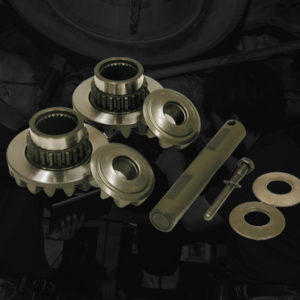In a technology-laden world, the vehicles we drive provide comfort and luxury that make being on the road more enjoyable. It’s the little things–like being able to adjust your seats to your liking–that can make the hour-commute to work less stressful.
Power seats are an example of a feature that offers drivers comfort and convenience inside the vehicle cabin.
What Are Power Seats?
Power seats are a type of car seat that has levers, buttons, switches, or a joystick that lets the driver adjust the height and position of the seat. This makes it easier to find a comfortable driving position.
How Do Power Seats Work?

Power seats are mainly operated by a motor. Different wires are attached to the motor and to the buttons that control the actions of the seat.
The motor is also connected to (and powered by) the electrical system of the vehicle.
Power Seat Features and Subtypes
Besides adjusting the position of the seat, power seating has other features that provide ease and convenience to the driver. Here are some features commonly found in power seats, as well as different subtypes:
Dual Power Seats
Dual power seats let you adjust both front seats. Usually, vehicles that come with power seating only offer adjustments for the driver’s side.
Memory Seats
Pressing the memory seat button saves the current seat position for future use. It’s helpful for drivers who share their car with others that have their preferred seating position.
Heated Seats
Heated seats use a heating coil underneath the seat to warm it up. The car battery powers it up by discharging electricity to the coil. Additionally, some vehicles have thermostats installed to prevent overheating and to get your desired seat temperature.
Cooling/Ventilated Seats
Cooling and ventilated seats both cool down the driver seat. However, there’s a slight difference between the two regarding how they function.
Cooling seats generally use fans and ducts that are connected to the seat to circulate air and cool it down. There are also cases when the air that is used comes from the vehicle’s air conditioning system.
Ventilated seats also use fans and ducts connected to the seat to circulate the air. The difference is they never use refrigerated air, such as the air conditioning system. Some systems suck the air into the seat to create an evaporating effect to cool it down.

Massaging Seats
Some seats have a massaging option. The way to turn it on is different in every vehicle, but you can find it either on the infotainment menu or the side of the seat. As for the massaging options, most massaging seats include upper and lower rolling, as well as inflating and deflating air pockets.
Common Power Seat Issues
Since the seats are wired, they’re bound to face certain issues over time. Here are some of the most common issues as well as ways you can diagnose and fix them:
Power Seat Moves Slowly
A slow-moving power seat might indicate that its motor is failing. It usually indicates an issue with the wiring, keeping the motors from receiving the appropriate voltage to quickly move the seat.
It’s best to have this issue checked out by a mechanic immediately. Having it diagnosed might prevent irreversible damage, and it could save you from potentially expensive repairs.
Power Seat Moves Then Stops
If your power seat suddenly stops while you’re still pressing the switches, the problem might lie within the seat itself. Issues such as this usually stem from wear and tear.
It’s not recommended to try and fix this issue yourself. It’s better to have an expert identify where the issues lie and have them make the necessary repairs.
Power Seat Doesn’t Move
If you press the switch of a power seat and it doesn’t move, then the motor or the switch may be faulty, or the electrical wires may be short-circuited. Often, it’s the forward and backward movement that’s affected by this issue.
There aren’t any ways to fix it yourself, so you must take your vehicle to a technician as soon as possible.
How Long Do Power Seats Last?

Power seats and their components should last the lifespan of your vehicle. However, it’s possible for unexpected electrical issues to arise, which may require you to repair certain parts.
How Much Does Power Seat Motor Replacement Cost?
A power seat motor replacement costs somewhere between $525 and $550. A brand-new power seat motor costs $420 on average. The overall price will depend on the labor cost of the auto shop. Expect labor fees to range from $105 to $130.
A power seat switch costs somewhere between $320 and $330. Labor fees typically range from $50 to $60, while the parts average $270 in the market.
Can You Replace Manual Car Seats With Power Seats?
It’s possible to replace manual car seats with electric or powered ones. Some auto body shops convert existing manual seats to electrics.
You can also have the old seat removed and replaced with a new electric one to ensure the replacement is brand-new.
Final Thoughts
The comfort and ease that power seats provide are unmatched. Even so, it’s often easy to underestimate the luxury they provide. As such, it’s important to know how power seats work and some of their most common issues.
Diagnosing the problem and acting on it will save you money in the long term. Similarly, knowing how the system works should give you an idea of how to prevent common issues from occurring.
Any information provided on this Website is for informational purposes only and is not intended to replace consultation with a professional mechanic. The accuracy and timeliness of the information may change from the time of publication.






























